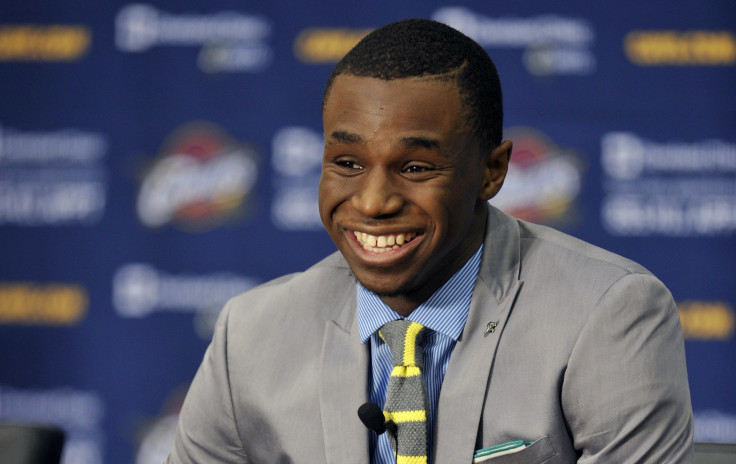NBA Trade Rumors: How Often Are No. 1 Picks Traded? Andrew Wiggins Could Join Rare Group

A little over a year and a half ago Andrew Wiggins was the most sought after and drooled over basketball player in the country. He was practically guaranteed to be a top 3 pick in the NBA Draft if he left Kansas after one season.
With a unique offensive skill set and loads of athleticism, the Canadian-born, 6-foot-8 swingman’s potential was juxtaposed with Michael Jordan, Kobe Bryant and LeBron James.
And now 22 days after the Cleveland Cavaliers selected him with the No. 1 overall pick in last month’s draft, there’s a distinct possibility that Wiggins, 19, could be traded to the Minnesota Timberwolves for Kevin Love.
Going further, Wiggins could be just the sixth No. 1 pick to never play a single game for the team that drafted him, and only the third to be traded. And strangely in four of the five times this rare situation has occurred, extenuating circumstances completely unrelated to talent or potential were heavily involved.
Since the draft began in 1947, before the Basketball Association of American (BAA) and the National Basketball League (NBL) merged two years later to form the NBA, five No. 1 picks were either traded, refused to play for the team that picked them, were banned from the league or just didn’t want to play professionally.
The first was the very first No. 1 pick Clifton McNeely in 1947. McNeely starred for Texas Wesleyan and was selected by the Pittsburgh Ironmen. The only problem was McNeely never wanted to play pro ball. He wanted to coach and wound up winning four Texas state titles.
Next was 6-foot-11, 235-pound forward Chuck Share in 1950. The Boston Celtics took him first overall but quickly traded him to the Fort Wayne Pistons. He eventually wound up with the St. Louis Hawks and as team captain helped them beat Boston in the 1958 finals.
A year later Gene Melchiorre, a two-time all-American at Bradley, was picked by the Baltimore Bullets. But he’s the only No. 1 pick to never play in the league at all. One of 31 players from seven schools who were arrested for the infamous college basketball point-shaving scandal in 1951, Melchiorre was barred for life from the NBA.
A quarter century later, North Carolina State guard David Thompson became the third. He was selected No. 1 overall in both the NBA and American Basketball Association (ABA) drafts, but the high-flyer and future Hall of Famer chose to sign with the latter’s Denver Nuggets over the former’s Atlanta Hawks.
The last and most recent No. 1 pick to be traded was Chris Webber. After starring for Michigan’s “Fab Five” freshman class, Webber was the best player in the country and the consensus No. 1 pick. That year the Orlando Magic (then only a four-year-old franchise) held the top selection and Webber refused to play for the budding squad. Webber wanted to play with veterans on an established team, and was traded to the Golden State Warriors for No. 3 pick Penny Hardaway and three more picks in subsequent drafts.
Typically the No. 1 pick is the most precious commodity in the NBA. Yet Cleveland wants to contend for a championship right away after James announced his triumphant return to the team and city last week. The Cavs are once again adhering to James’s whims and demands, and by all reports, James wants Love as his teammate.
However the only way the Cavs can acquire Love is by sending Wiggins to Minnesota. Since James agreed to come back, the Cavs have reportedly debated on whether or not to trade Wiggins. He could learn from James, who will turn 30 later this year, and be the future of the team for the next decade, or he could be a bust. As of now Wiggins represents potential, while Love, 25, is a proven veteran entering his prime.
Now Wiggins (despite a desire to play pro ball, with no scandals in his closet or another league to jump to, and already set to play with and learn from the best player in the league in James) through no fault of his own could join this eclectic, hodgepodge list.
What a difference a year and a half makes.
© Copyright IBTimes 2025. All rights reserved.





















